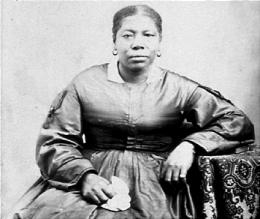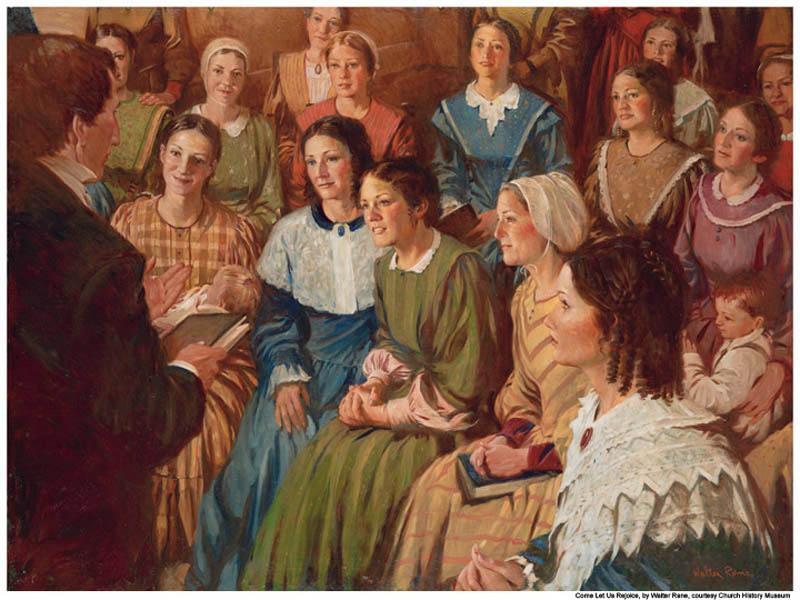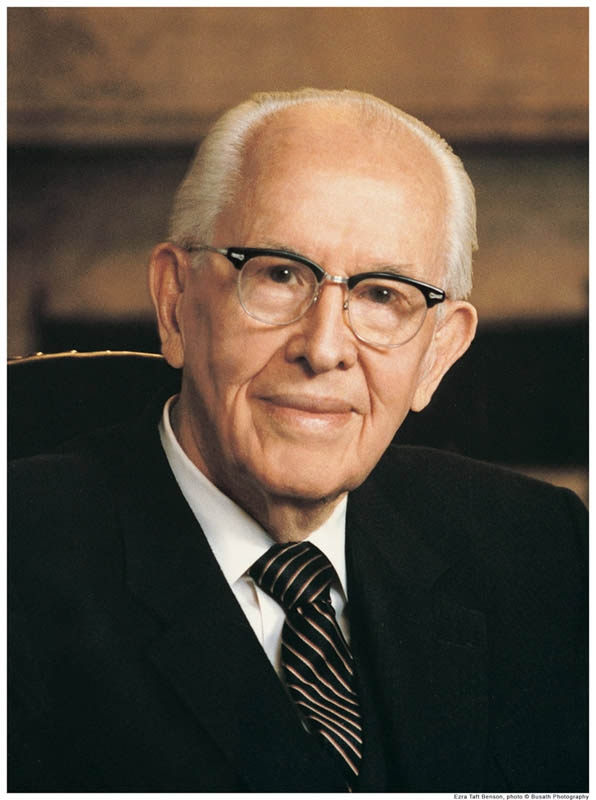Mormon polygamy was discontinued more than one hundred years ago, but it is still associated with Mormonism and Mormon history, and sometimes incorrectly associated with modern Mormonism. Mormon is a commonly used nickname for The Church of Jesus Christ of Latter-day Saints.
 Polygamy—or more correctly polygyny (the proper term for one man having multiple wives) was first practiced in the Old Testament. In Genesis 16, we learn that Sarai asked her husband Abraham to marry her handmaiden in order to produce heirs. This was very difficult and stressful for all three, but God sent an angel to help the handmaiden through the trials that followed. Abraham is the first recorded case of polygamy. Later, Jacob took additional wives, as did Gideon, Elkanah (the father of Samuel), and others. The Bible gave instructions on the treatment of additional wives and the resulting children. If polygamy were immoral in all situations, God would not give instructions on how to responsibly practice it. Instead, he would have instructed them to end the practice. (See Deuteronomy 21:15-17 and Exodus 21:10-11 as examples in the Old Testament of Biblical instruction on the appropriate practice of polygamy.) Since some practitioners were prophets, it is clear polygamy was acceptable to God. However, it should be noted that polygamy was not the rule in all time periods. It was practiced only when approved by God and for His purposes.
Polygamy—or more correctly polygyny (the proper term for one man having multiple wives) was first practiced in the Old Testament. In Genesis 16, we learn that Sarai asked her husband Abraham to marry her handmaiden in order to produce heirs. This was very difficult and stressful for all three, but God sent an angel to help the handmaiden through the trials that followed. Abraham is the first recorded case of polygamy. Later, Jacob took additional wives, as did Gideon, Elkanah (the father of Samuel), and others. The Bible gave instructions on the treatment of additional wives and the resulting children. If polygamy were immoral in all situations, God would not give instructions on how to responsibly practice it. Instead, he would have instructed them to end the practice. (See Deuteronomy 21:15-17 and Exodus 21:10-11 as examples in the Old Testament of Biblical instruction on the appropriate practice of polygamy.) Since some practitioners were prophets, it is clear polygamy was acceptable to God. However, it should be noted that polygamy was not the rule in all time periods. It was practiced only when approved by God and for His purposes.
Polygamy was first proclaimed a doctrine by Joseph Smith, but it was not announced publicly until Brigham Young was leading the church. Some polygamist marriages, especially in the earliest times, were spiritual marriages, meaning no intimacy was involved. Mormons in that time period often saw marriage much differently than does modern society. Mormons believe marriage is an eternal covenant—you remain married after death and your family, including your ancestors, are eternally joined. During the time Mormon polygamy was practiced, it was often merely a way to join two families together for eternity and sometimes also provided financial and legal protection for widows. Many marriages were strictly “on paper.” There is no evidence that Joseph Smith had more than a spiritual marriage with any wife other than his first wife, Emma. Read more on Joseph Smith’s practice of polygamy at FAIR LDS: Joseph Smith/Mormon Polygamy.
Polygamist groups that exist today are not part of the Mormon church, even if they use the name Mormon in their titles. Mormon polygamy was discontinued more than one hundred years ago, making it a part of long ago Mormon history, when the prophet received a revelation showing him that if it were to continue, the government, which was already interfering in Church property ownership, would confiscate and desecrate the temples. Despite this, the prophet said he would endure anything if he had not been commanded to end it. Mormons have complete faith in God and believe He knows everything. Therefore, knowing how long polygamy needed to be practiced in order to fulfill His plan, and knowing how long it would be allowed to be practiced, God organized the practice so everything would be accomplished in the time allowed. Those who make comments about the convenient timing of the end of polygamy are demonstrating a lack of faith in God’s ability to plan for His children and His Church.
Polygamy, as practiced in the 1800s, was very different from the more common forms of modern polygamy. No one was forced to practice polygamy and Brigham Young, the prophet of the church when the open practice of polygamy began, did not select wives for men unless asked to do so. A man who wanted to enter into a polygamous marriage did need permission to do so and had to demonstrate he could adequately support each wife. The first wife had to give her permission for future marriages. In addition, no woman was required to accept a marriage proposal or to enter into polygamy. Although divorce is not encouraged, Brigham Young nearly always granted women who requested them a divorce. Women who entered into a polygamous marriage and then found they could not adjust were free to divorce. Men who requested a divorce were normally told to go back and work harder on their marriages.
The practice of polygamy (“Mormon polygamy”) was actually a minority practice in the Church during early Mormon history. Only one-third of married women were involved in a marriage with Mormon polygamy. The majority included only two wives. Thirty percent involved women who had been previously married. In the 1800s, women had few legal rights of their own. Marriage offered them more legal protection and also provided financial security at a time when it was difficult for women to support themselves.
There were far more Mormon women than men, so polygamy offered a way for more women to be married. It also motivated men to be better men, since they had to compete for the available women and women were free to choose their own husbands. A man who wished to convince a woman to be a second wife had to be certain his first wife was well-treated, as proof that he would make a good husband.
Mormon women had a high degree of suffrage prior to becoming a state. They were given the right to vote in Utah in 1870. However, the federal government removed that right in 1887. Needless to say, the women were not happy about this. Many of them became active in the women’s rights movement with the full financial and emotional support of their husbands, including the wives of many church leaders and some wives of Brigham Young himself. With the approval of the Mormon Church, the women organized suffrage organizations in Utah, most associated unofficially with the Relief Society organizations, an official Mormon auxiliary for women. Utah women became the second to gain the right to vote when it was returned and it is the support of the Mormon Church that is credited with making this happen.
In 1870, the Mormon women in Utah held a conference less than a month before suffrage was granted, in which they evaluated and promoted the status of women in the Church. Eliza R. Snow was a speaker at this conference. She had been married to Joseph Smith as a plural wife and after his death, was married to Brigham Young. This is considered to have been a courtesy marriage that did not involve intimacy. However, Snow and Young were good friends and he depended on her as a leader of the women of the church. At this conference, she said:
“Our enemies pretend that, in Utah, woman is held in a state of vassalage—that she does not act from choice, but by coercion. What nonsense!
“I will now ask of this assemblage of intelligent ladies, Do you know of any place on the face of the earth, where woman has more liberty and where she enjoys such high and glorious privileges as she does here as a Latter-day Saint? No! the very idea of a woman here in a state of slavery is a burlesque on good common sense … as women of God, filling high and responsible positions, performing sacred duties—women who stand not as dictators, but as counselors to their husbands, and who, in the purest, noblest sense of refined womanhood, are truly their helpmates—we not only speak because we have the right, but justice and humanity demands we should!” (See Jaynann Morgan Payne, “Eliza R. Snow: First Lady of the Pioneers,” Ensign, September 1973.)
One unique side-effect of polygamy in Mormon history was that it allowed the Mormon women who participated an unusual level of freedom. Brigham Young encouraged women in these relationships to return to school for more education or to take on careers, as long as there were enough women at home to care for the children. Many of the women held careers not traditionally held by women in that time. Martha Cannon was a doctor, certainly an unusual career for a women in pioneer days. After her marriage (in a polygamous marriage), she turned to politics instead. A Democrat, she became the first female state senator. In an interesting side-note, her husband was also a candidate in this race. Her primary purpose for running was to reform health care. Emmeline B. Wells, one of Daniel H. Wells’ six wives, was a magazine editor and an active supporter of suffrage. With her husband’s approval, she often traveled to the nation’s capital to work on suffrage issues and became a close friend of Susan B. Anthony.
It is important to remember that Mormon women had been made strong by the extraordinary persecutions they faced as church members during early Mormon history. They had seen their homes taken and their children and spouses murdered. Mormons were the only religious group to have a government-issued extermination order placed on them. They had crossed the plains as pioneers in difficult circumstances and when the government asked the men to leave the wagon train to become soldiers, or when the men died, the women continued on alone. They made homes under the most difficult pioneer circumstances. They were strong and not easily intimidated. They were not, therefore, the meek and downtrodden creatures people sometimes made them out to be.
“As I have often told my sisters in the Female Relief Societies, we have sisters here who, if they had the privilege of studying, would make just as good mathematicians or accountants as any man; and we think they ought to have the privilege to study these branches of knowledge that they may develop the powers with which they are endowed. We believe that women are useful not only to sweep houses, wash dishes, make beds, and raise babies, but that they should stand behind the counter, study law or physic [medicine], or become good book-keepers and be able to do the business in any counting house, and this to enlarge their sphere of usefulness for the benefit of society at large (DBY, 216–17).
The sisters in our Female Relief Societies have done great good. Can you tell the amount of good that the mothers and daughters in Israel are capable of doing? No, it is impossible. And the good they do will follow them to all eternity (DBY, 216). (Brigham Young, Teachings of the Presidents of the Church: Brigham Young.)
Mormon polygamy played a critical role in Mormon history. Not only did it increase Mormon church membership rapidly enough to ensure its survival, it also provided legal and financial safety for many women, helped immigrant women to assimilate more quickly, and allowed many of the women more freedom to pursue careers or political priorities.
About Terrie Lynn Bittner
The late Terrie Lynn Bittner—beloved wife, mother, grandmother, and friend—was the author of two homeschooling books and numerous articles, including several that appeared in Latter-day Saint magazines. She became a member of the Church at the age of 17 and began sharing her faith online in 1992.






